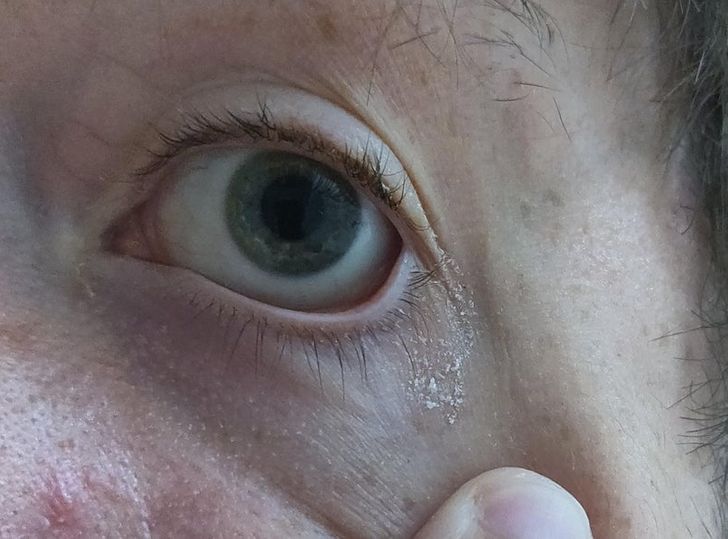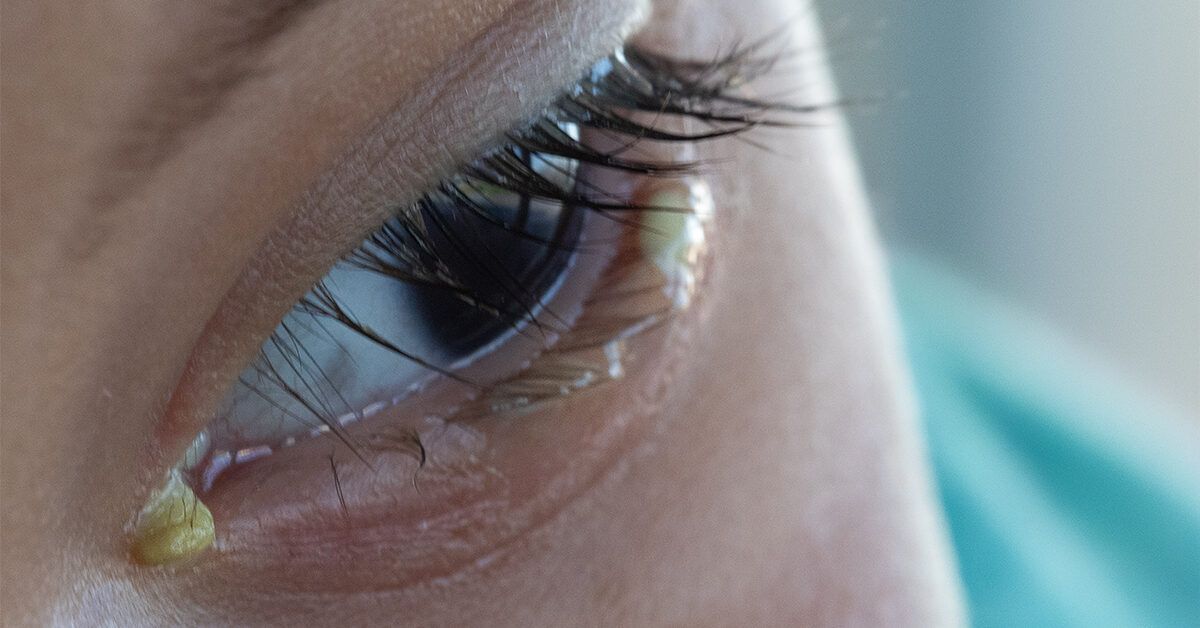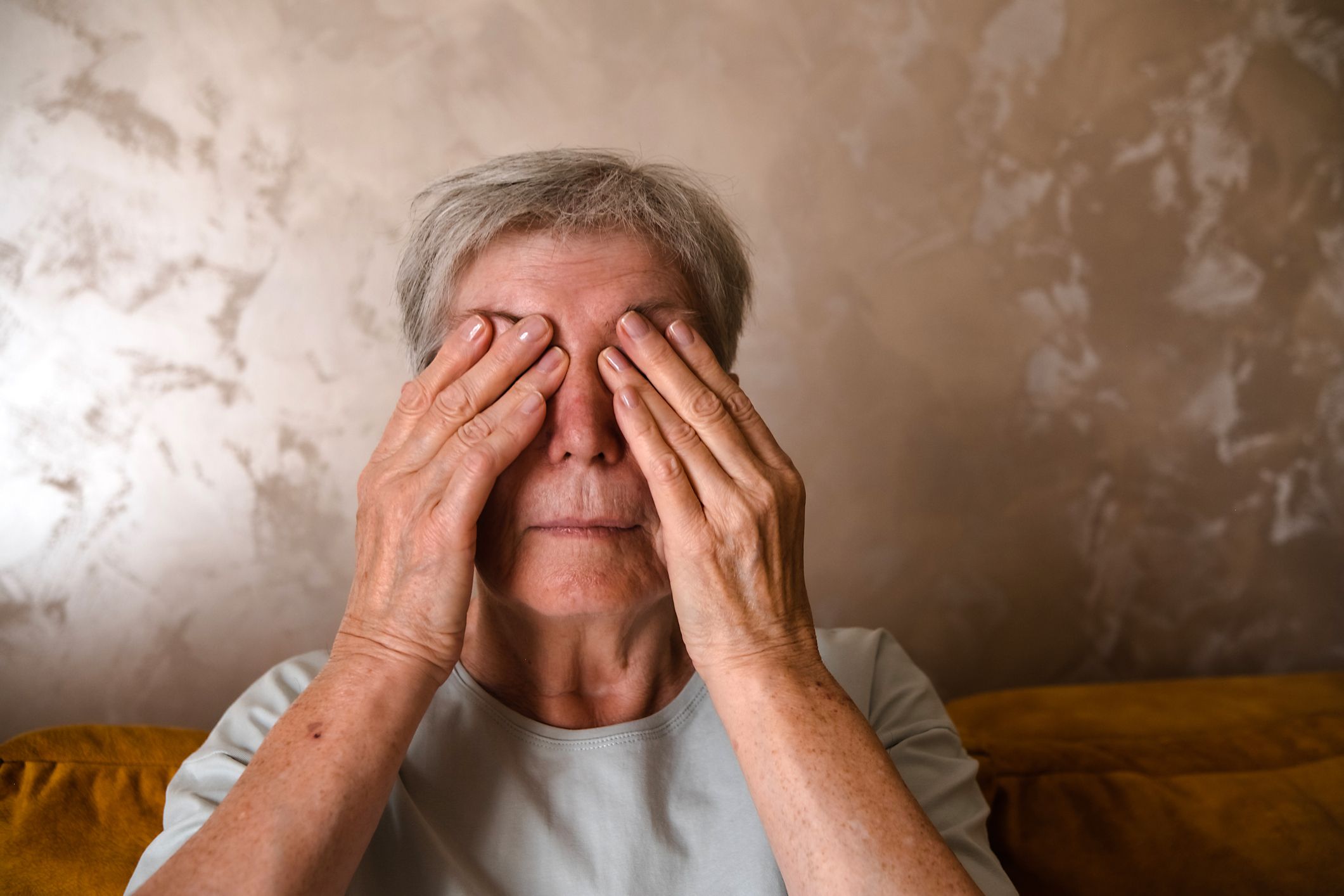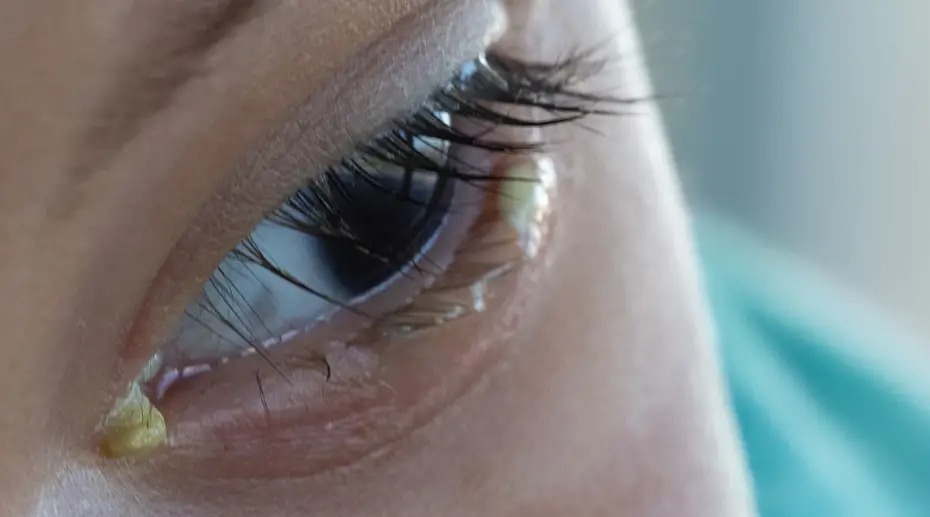In this article, we’ll explore what eye sleep is, why it forms, and when it could indicate a potential health issue.
What Is Eye Sleep?
Eye sleep is a buildup of debris in the eyes, consisting of various natural substances produced by the body overnight. These include mucus, oil, dead cells, and bacteria. While the body actively works to flush out these substances during the day, they tend to accumulate more at night when the eyes are closed, leading to the crusty discharge.
The Role of Mucus and Tears
During waking hours, the blinking action of the eyelids helps spread tears across the surface of the eye. This process removes excess mucus and keeps the eye moist. At night, however, when the eyes are closed, the mechanism that keeps the eyes clear isn’t active. As a result, mucus, tears, and oils can build up, especially in the corners of the eyes and along the eyelashes. The accumulated material hardens overnight, forming what we know as eye sleep.

The Purpose of Eye Sleep
According to Dr. Rachel Clemmons, an ophthalmologist at the Wills Eye Hospital in Philadelphia, this discharge is a sign that your immune system is working effectively. Dr. Clemmons explains that the eye’s defense mechanisms, which include antimicrobial proteins in tears and a mucus barrier, neutralize potentially harmful bacteria during sleep. What we see as eye sleep is evidence that the immune system is successfully protecting the eyes from infection【Source: Wills Eye Hospital】.

When Is Eye Sleep Normal?
For most people, the buildup of eye sleep is completely normal and nothing to be concerned about. As long as the eye discharge is yellowish or clear and non-irritating, it is typically a natural result of overnight buildup. In these cases, there are no additional symptoms, and eye sleep usually clears up once you blink or wipe your eyes.
Normal Eye Sleep vs. Abnormal Eye Discharge
According to the Cleveland Clinic, eye discharge can be considered normal unless accompanied by other symptoms or signs of infection. Conjunctivitis, commonly known as pink eye, can cause excessive and abnormal discharge. In such cases, the discharge may be green, sticky, foamy, or increased in quantity.

Symptoms accompanying abnormal eye discharge may include:
- Pain in or around the eyes
- Itching or irritation
- Redness in the eyes or eyelids
- Blurred vision
- Sensitivity to light
- Swollen eyelids
- A bump on the eyelid
If you notice these symptoms, it’s important to consult an eye care professional as these may indicate an infection or other eye health concerns【Source: Cleveland Clinic】.
Causes of Abnormal Eye Discharge
Several factors can contribute to abnormal eye discharge. Infections caused by various bacteria, such as Staphylococcus epidermidis, Propionibacterium species, Corynebacterium species, and Streptococcus species, are common culprits. These bacteria can lead to conditions like conjunctivitis, where the discharge may become more abundant and potentially green or yellow in color【Source: American Academy of Ophthalmology】.
In addition to bacterial infections, dry eyes, allergies, and certain eye injuries can lead to an increase in eye discharge. If the body isn’t able to properly clear the debris, it can result in a buildup of mucus and other fluids.

Risk Factors for Excessive Eye Sleep
Certain individuals are more likely to experience increased eye discharge, including:
- Babies and young children: Their tear ducts are often narrower, making it more difficult for them to clear mucus properly, leading to more frequent eye sleep.
- Older adults: As people age, their tear production often decreases, which can lead to dry eyes and excessive discharge.
- People with dry eyes: Conditions like dry eye syndrome or blepharitis can cause more mucus production and discharge.
- People with allergies: Allergies can lead to watery, itchy eyes that result in more eye sleep.
When to Seek Medical Advice
Dr. Samantha Weiss, an optometrist in private practice, advises that while mild eye discharge is typical, significant changes in the amount, color, or consistency of the discharge could signal an underlying issue. Changes in eye discharge may indicate an infection, blocked tear ducts, or other conditions that require medical attention.
Conclusion: Eye Sleep and Eye Health
In most cases, eye sleep is a natural occurrence that doesn’t require medical intervention. It is simply a sign that the body is working to protect the eyes while we sleep. However, if the discharge changes in appearance, becomes more abundant, or is accompanied by other symptoms like pain, redness, or blurred vision, it’s important to consult with an eye care professional.
By understanding the science behind eye sleep and the potential causes of abnormal discharge, you can better monitor your eye health and take appropriate action if necessary.
Sources:
- Cleveland Clinic – Eye Discharge
- Wills Eye Hospital – The Science Behind Eye Health
- American Academy of Ophthalmology – Conjunctivitis and Eye Health
- National Eye Institute – Dry Eyes and Related Conditions
